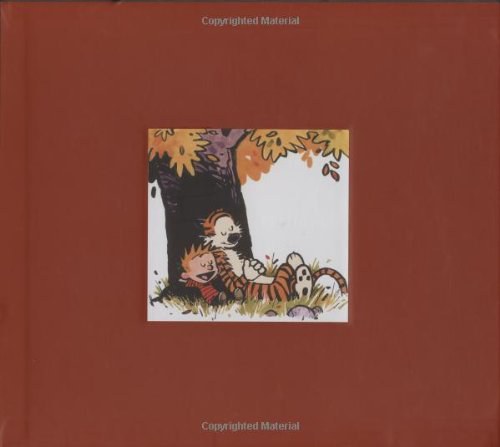
《The Architecture of Open Source Applications》书籍《The Architecture of Open Source Applications》
作者:《The Architecture of Open Source Applications》书籍
出版社:Lulu.com
出版年:2011-5-23
评分:8.5
ISBN:9781257638017
所属分类:网络科技
书刊介绍
内容简介
Architects look at thousands of buildings during their training, and study critiques of those buildings written by masters. In contrast, most software developers only ever get to know a handful of large programs well—usually programs they wrote themselves—and never study the great programs of history. As a result, they repeat one another's mistakes rather than building on one another's successes.
This book's goal is to change that. In it, the authors of twenty-five open source applications explain how their software is structured, and why. What are each program's major components? How do they interact? And what did their builders learn during their development? In answering these questions, the contributors to this book provide unique insights into how they think.
If you are a junior developer, and want to learn how your more experienced colleagues think, this book is the place to start. If you are an intermediate or senior developer, and want to see how your peers have solved hard design problems, this book can help you too.
作品目录
Introduction Amy Brown and Greg Wilson
1. Asterisk Russell Bryant 1
2. Audacity James Crook 15
3. The Bourne-Again Shell Chet Ramey 29
4. Berkeley DB Margo Seltzer and Keith Bostic 45
5. CMake Bill Hoffman and Kenneth Martin 67
6. Eclipse Kim Moir 77
7. Graphite Chris Davis 101
8. The Hadoop Distributed
File System Robert Chansler, Hairong Kuang, Sanjay Radia,
Konstantin Shvachko, and Suresh Srinivas 111
9. Continuous Integration C. Titus Brown and Rosangela Canino-Koning 125
10. Jitsi Emil Ivov 139
11. LLVM Chris Lattner 155
12. Mercurial Dirkjan Ochtman 171
13. The NoSQL Ecosystem Adam Marcus 185
14. Python Packaging Tarek Ziadé 205
15. Riak and Erlang/OTP Francesco Cesarini, Andy Gross, and Justin Sheehy 229
16. Selenium WebDriver Simon Stewart 245
17. Sendmail Eric Allman 271
18. SnowFlock Roy Bryant and Andrés Lagar-Cavilla 291
19. SocialCalc Audrey Tang 303
20. Telepathy Danielle Madeley 325
21. Thousand Parsec Alan Laudicina and Aaron Mavrinac 345
22. Violet Cay Horstmann 361
23. VisTrails Juliana Freire, David Koop, Emanuele Santos,
Carlos Scheidegger, Claudio Silva, and Huy T. Vo 377
24. VTK Berk Geveci and Will Schroeder 395
25. Battle For Wesnoth Richard Shimooka and David White 411
Bibliography
Making Software
相关推荐
-

激荡人生
《激荡人生》内容简介:《激荡人生》是著名财经作家吴晓波继《大败局》、《激荡三十年》之后的又一力作。《激荡人生:一起走过三十
-

Morag Joss《Funeral Music》
InternationalcellistSaraSelkirkisapprehensiveaboutthecharityconcertinBathsfamous...
-

希梅尔《现代体系结构上的UNIX系统》
本书首先回顾了与全书其他内容切实相关的UNIX系统内幕。回顾的目的是增进读者对UNIX操作系统概念的了解,并且定义随后使用的术语
-

汇编语言程序设计-第2版
汇编语言程序设计-第2版 本书特色 《汇编语言程序设计(第2版)》以Intel 80x86 CPU的指令系统为介绍对象,以并行推进的方式来介绍其16位和32位C...
-

Michele Campagna《GIS for Sustainable Development》
"GISforSustainableDevelopment"examineshowGISapplicationscanimprovecollaborationi...
-

Pepin Press《Web Design Index 7》
《網頁設計索引》年刊自2000年誕生起現已發展成同行業最重要的出版物之一,每年都會對網頁設計的最新趨勢給予準確概述。網站可簡
-

神探夏洛克·1
《神探夏洛克·1》内容简介:《神探夏洛克》是近年上映的英剧逸品,主演“卷福”(本尼迪克特康伯巴奇)“花生”(马丁弗瑞曼)凭借
-

《通信系统概论》书籍《通信系统概论》
《面向21世纪高等学校信息工程类专业规划教材·通信系统概论》共有8章内容,包括绪论、数字通信系统、多媒体通信系统、通信网络系
-
![[美] 比尔·盖茨《未来时速-数字系统与商务新思维》](http://oss.shudanhao.com/caiji/chazidian/2023/4323.jpg)
[美] 比尔·盖茨《未来时速-数字系统与商务新思维》
比尔・盖茨继《未来之路》后又一新作快速发展的未来将会怎样?今天的管理者们能做什么?比尔・盖茨在《未来时速》中提出了一个新
-

观沧海
《观沧海》内容简介:东临碣石,以观沧海。本书借用曹操《观沧海》为书名,探讨大航海时代西方天主教、中东穆斯林和明王朝的冲突与
-

基于YANG的可编程网络
《基于YANG的可编程网络》内容简介:整个网络行业正面临着自动化的压力,以实现规模化和更快的发展,本书介绍如何利用YANG来释放网
-

白鹭在冰面上站着
《白鹭在冰面上站着》内容简介:无论被叫作香格里拉,还是勐巴拉西,云南都是“人间天堂”的意思。在雷平阳眼里,云南是他的文学诞
-

宋词背后那些有趣的灵魂
《宋词背后那些有趣的灵魂》内容简介:《宋词背后那些有趣的灵魂》是一本透过词人人生来品读古典诗词之美的书,囊括了十位宋代优秀
-

《Simply Scheme 2nd Edition》书籍《Simply Scheme - 2nd Edition》
ForanyonelearningtheSchemeprogramminglanguage,thesecondeditionofSimplyScheme:Int...
-

《Exploratory Analysis of Spatial and Temporal Data》书籍《Exploratory Analysis of Spatial and Temporal Data》
Exploratorydataanalysis(EDA)isaboutdetectinganddescribingpatterns,trends,andrela...
-

戊戌变法的另面:“张之洞档案”阅读笔记
《戊戌变法的另面:“张之洞档案”阅读笔记》内容简介:作者在“张之洞档案”的系统阅读中突出地感受到,这批史料给今人提供了观察
-

机器学习技术及应用
《机器学习技术及应用》内容简介:机器学习是人工智能的一个方向。它是一门多领域交叉学科,涉及概率论、统计学、矩阵论、神经网络
-

精通Oracle SQL-(第2版)
精通Oracle SQL-(第2版) 本书特色 《精通oracle sql(第2版)》语言精炼、风趣,所涵盖的内容涉及sql核心、sql执行、分析函数、联结、测...
-

清华少年说(第四辑)
《清华少年说(第四辑)》内容简介:这是一本关于清华年青学子的书籍。无论是醉心学术、勤奋有加的学霸,还是矢志不渝、情系家国的
-

胡登跳研究文集
《胡登跳研究文集》内容简介:该书收集整理了胡登跳先生的主要音乐研究文章以及2015全国民族室内乐论坛暨胡登跳学术思想研讨会的研





